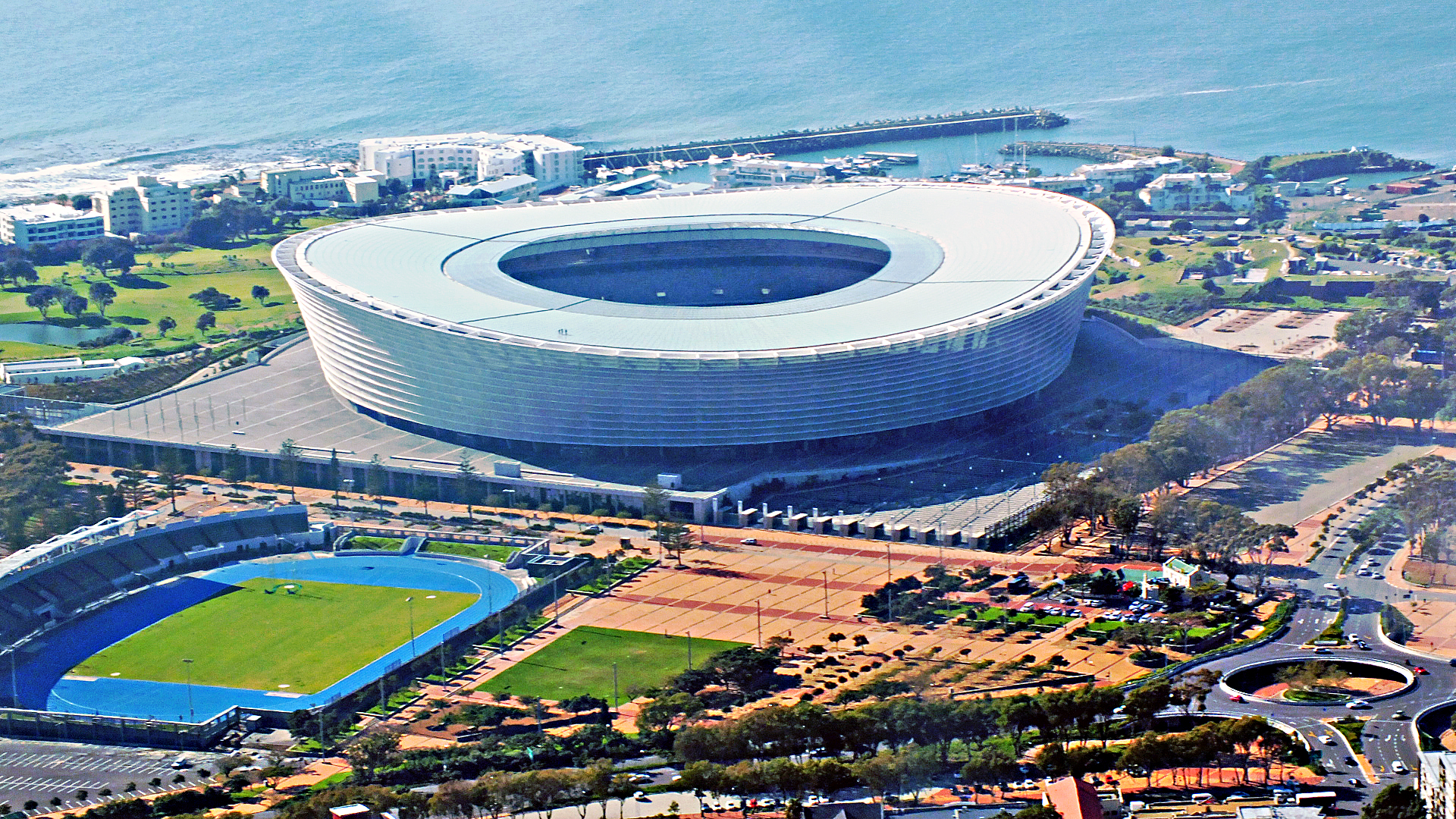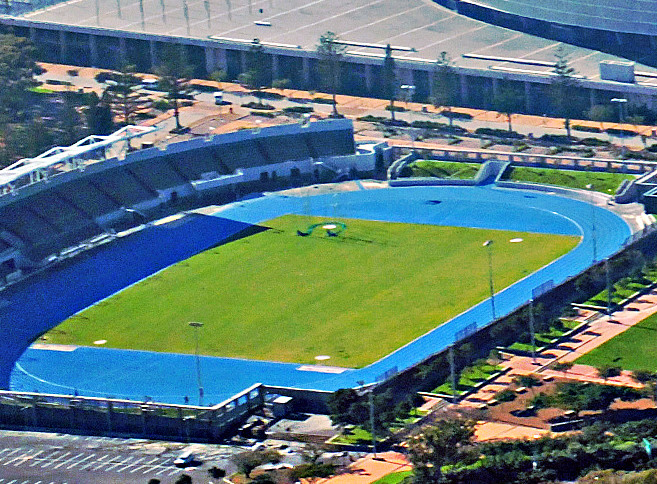
Cape Town Stadium and Athletic Stadium
Being a member of AAC Atlantic Athletic Club does not only get you in touch with amazing running mates. It also gives you the opportunity to train on a state of the art track in the most beautiful city in the world.
It’s been my very first time on an athletic track since I left school, and unlike during school days I wanted to be on this track 🙂
We were a small group of 7 AAC members, guided by Chris Readman.
My plan was to do only 4 sets of 400m with 400 m active recovery in between the sets. Usually such a track training should consist of 6 – 10 sets for us marathon and ultra marathon runners. I decided on only 4 sets for several reasons:
- The speed of 1:28 min/400 m (= 3:40 min/km) is way beyond what I usually run (5:15 – 5:45 min/km for 30+ km runs and 4:30 min/km for 10k). Therefore the speed comes with a high risk of injuries – especially when you get tired.
- The impact on the feet and the body on a track is completely different to running on tar (I train about 2,450 km this year on tar and 350+ km on trails). Even if the impact is less than on tar, but since my body is not used to it, there is an additional risk factor.
- In the past I often got injured doing too much hard speed work. I want to learn from that and avoid getting injured.
In between the sets you have two options:
- Stop running and recover for about two times as long as you ran.
- Do an active recovery for 400 – 800m.
I decided on the latter. After the 400 m sprint I walked around the track for 200 m and carried on jogging for further 200 m until I started the next repeat.
It was quite some fun and I really enjoyed running on a track and in this beautiful environment. I was able to hit the time I calculated for the first 3 sessions and slowed down a bit during the 4th set.
In addition to my Garmin Fenix 3, which uses GPS to measure speed, stride rate (run cadence) and distance, I also wore the HR strap and the Garmin Footpod because it is more accurate regarding the pace. The HR strap adds the functionality of measuring the Ground Contact Time and the Vertical Oscillation.
You can see, during the speed work the run cadence went up to 190 – 200 and the vertical oscillation down to some 5 cm. The recommended cadence is 180 and I might need to work on the stride length.
During my faster (5:00 – 5:25 min/km) ultra training runs I aim for a 170 – 180 cadence, while my vertical oscillation is in the range of 9 – 9.5 cm.
Anyway, thanks to Chris for managing the training session and to AAC for providing us the opportunity for track training. I’ll incorporate this every 2-4 weeks into my training schedule for the Ultra Races I have planned for 2016.
My track training session 4 x 400m at 1:28 – 1:30 min/400m: https://connect.garmin.com/modern/activity/989324737





